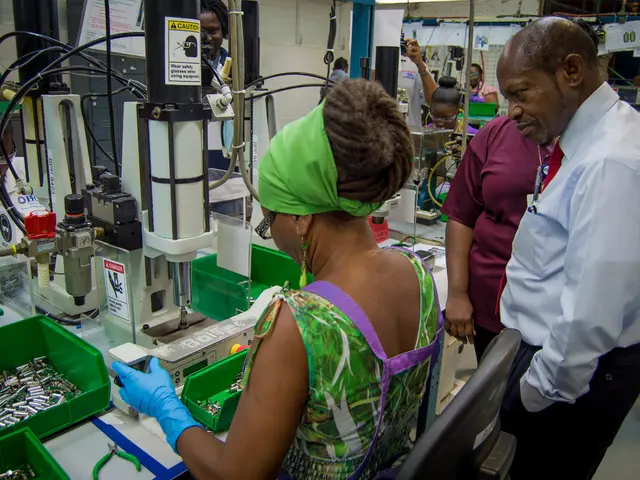Innovation in Solid-State Battery Technology: Introducing a Novel Material for Enhanced Ion Conductivity
The Technical University of Munich (TUM) has announced a groundbreaking development in energy storage technology, as researchers led by Prof. Thomas F. Fässler at the Chair of Inorganic Chemistry introduced a novel material with exceptional lithium-ion conductivity for solid-state batteries. This material, crafted from a lithium antimonide compound partially substituted with scandium metal, sets a new world record for lithium-ion conductivity[2][3][4][5].
The unique composition of the material results from the partial replacement of lithium with scandium, creating vacancies—specific gaps in the crystal lattice—that facilitate faster and more efficient lithium-ion movement. These vacancies act as channels, significantly improving ion conductivity beyond existing materials[2][3][4][5].
This breakthrough has significant implications for the development of energy storage solutions, as it promises improvements in battery performance, such as potentially higher charge rates and energy density. Because the material also conducts electrons, it is particularly suitable as an additive in battery electrodes, offering dual conductivity beneficial for battery efficiency. Its thermal stability and compatibility with established chemical production methods make it attractive for practical battery manufacturing[2][3][4][5].
While further testing is required before integration into commercial battery cells, scientists at TUM are optimistic about extending the principle of scandium-induced vacancies to other elemental combinations. A patent has been filed for this development, signifying the practical potential of the material. Collaborations within TUM, including with the Chair of Technical Electrochemistry, have been instrumental in validating measurements and will likely continue to support development towards commercialization.
This development combines high ionic and electronic conductivity with thermal stability, marking a significant step toward next-generation solid-state battery technologies that could offer safer, higher-performance energy storage solutions[2][3][4][5]. The newly developed material, with its exceptional lithium-ion conductivity, could potentially revolutionize the approach to energy storage, enhancing efficiency and safety in electric vehicles and portable electronics.
- The energy-and-industry sector could witness significant advancements with the new material from TUM, as it offers dual conductivity for battery efficiency, particularly beneficial for faster charging rates and improved energy density in health-and-wellness devices like electric vehicles and portable electronics.
- This novel material, a lithium antimonide compound substituted with scandium, could potentially disrupt the science world, as its exceptional lithium-ion conductivity sets a new record, promising to transform solid-state battery technology in the technology industry.
- The finance sector might also take notice of this breakthrough in battery technology, as the potential for safer, higher-performance energy storage solutions could lead to increased investments in the health-and-wellness industry, where electric vehicles and portable electronics are key players.
- The fusion of high ionic and electronic conductivity with thermal stability makes this material an attractive candidate for the future of the energy sector, paving the way for next-generation batteries that could reshape the fitness-and-exercise market with safer, more efficient energy storage solutions.








